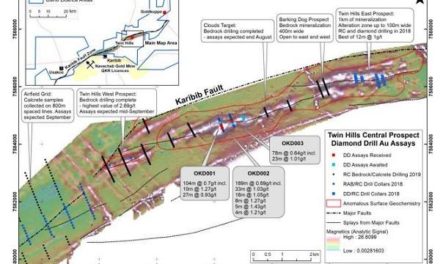
TransNamib’s 180 day turnaround strategy

The TransNamib Board members that are going to spearhead the 180 day turnaround strategy. The turnaround strategy will be initiated in the next six months to achieve amongst others; profitability within six months, the refurbishment of 12 General Electric locomotives, a planned upgrade of the railway line, and a operational restructure for employees. The refurbishment of the locomotives is expected to cost N$60 million and has been identified as a priority area by the board. Should the board succeed, a total of 50+ locomotives will be operational.
The turnaround strategy will be initiated in the next six months to achieve amongst others; profitability within six months, the refurbishment of 12 General Electric locomotives, a planned upgrade of the railway line, and an operational restructure for employees.
The refurbishment of the locomotives is expected to cost N$60 million and has been identified as a priority area by the board. Should the board succeed, in excess of 50 locomotives will be operational. Currently TransNamib is hampered by a lack of locomotives, effectively leaving close to 10,000 tons of freight at the Port of Walvis Bay.
Spokesperson of the TransNamib Board, Dantagos Jimmy-Melani said, “The current situation in Walvis Bay is such that, on average, we only have four locomotives per day available to do the shunting as well as the mainline services. To compound the problem, the locomotives regularly fail in that section, leaving further tonnages behind.”
According to Jimmy-Melani, the Windhoek and Walvis Bay routes account for nearly 80% of TransNamib’s revenue. She added, “The refurbishment of the locomotives is a priority and we envisage to have all twelve General Electric locomotives up and running within the next four months, plus all other locomotives that need smaller repairs to bring the operating total to 50 plus locomotives.”
Jimmy-Melani hinted at the possibility of probable job losses brought about by the need to implement an operational restructuring process. She said, “We currently have 1683 employees and believe some business units are heavily capacitated. There is thus a need for outsourcing so that we can focus on our core business.” According to Jimmy-Melani, the human capital leg of the strategy will only be implemented early 2015. Over the course of the next six months, TransNamib will spend close to N$120 million in order to manage an operational shortfall while a further N$70 million will be spent to clear long standing debt to what has been deemed critical suppliers of TransNamib, Jimmy-Melani explained. She added, “Once the 180 day plan has been fully implemented, TransNamib will have a positive cash flow of more then N$12 million per month. Clearly an aggressive turn-around plan which this Board is implementing.” TransNamib will effectively spend more then half the money allocated to implement its turnaround strategy, bringing the total to N$250 million. TransNamib has also established a joint-venture company, Namibia Rail Construction Pty Limited, tasked with the responsibility of improving the railway lines.
Melani-Jimmy added, “The board together with management will embark on a 12 month plan to address railway line infrastructure upgrade problems to improve movement along the lines. The recently established joint venture company will be extensively used to achieve this. Lines will be upgraded to Southern African Development Community standards where so required.”













































